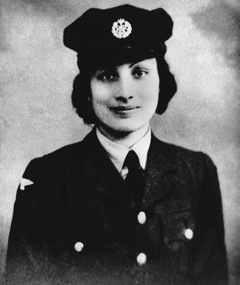Shimla : The remains of the pilot of the MiG-29 combat jet that crashed in Himachal Pradesh’s Lahaul Valley last month have been recovered after a fortnight-long combing operation in the snow-capped mountains, the Indian Air Force (IAF) said Nov 6.
“Some remains of Squadron Leader D.S. Tomar were recovered near the Gangstang glacier in the Chokhang hills (in Lahaul and Spiti district) Saturday,” Western Air Command (WAC) spokesman Wing Commander S.K. Mehta said over the telephone from New Delhi.
He said Tomar’s family has been informed about his death.
“Some more parts of the engine, wings and cockpit, but smaller in size, have been recovered in the area. Now the search is on to locate the data recorder (black box),” he said.
The MiG-29 was on a night mission Oct 18 after taking off from Adampur for Jalandhar in Punjab. It crashed at elevations ranging from 15,000 to 20,000 feet above sea level.
Mehta said prime facie it seemed that the jet disintegrated.
IAF sources told India Strategic defence magazine that the pilot, flying with a buddy in another aircraft, was descending when it hit head on into a mountain top, possibly due to disorientation, a factor common during night flying. Tomar was regarded though as a good pilot and officer.
The aircraft plunged 12 feet deep into snow, and due to the heat of th’ aircraft’s twin engines, there were initially some burn marks, then more snow due to the weather, and after that formation of hard ice.
The Western Air Command chief, Air Marshal D.C. Kumaria, ordered a 24×7 Search and Rescue (SAR) mission, and nearly 100 officers and men, as well as local mountain climbers and sniffer dogs were heli-dropped in the area despite the extremely bad weather and fear of avalanches. The army and the civil administration lent their helping hands.
It was, in fact, one of the biggest and toughest rescue missions ever undertaken by the IAF. Besides the weather, soft, sinking snow, and the gradient of 70 to 80 degrees posed extremely tough challenges for the safety of the rescuers themselves.
An IAF officer observed: “The pilot seems to have got disoriented and slammed right into a peak. Till the moment of impact, the fighter plane was working perfectly and everything happened so suddenly that the pilot didn’t have the chance to react,” the officer said, adding “the exact reasons would only be known after the recovery of the black box”.”
The had deployed several front-line aircraft, Cheetah and Chetak helicopters besides UAVs to comb the Chokhang hills, 40 km from district headquarters Keylong.
Mehta said ground combing would continue till “we reach to the bottom of the case”.
A number of expert mountaineers and climbers have been deployed in the search, mainly focused on the Gangstang glacier in the peaks above Chokhang village. “We are fighting against all odds – hostile weather, steep gradients, narrow gorges and crevices. Things are little bit difficult, but we have to complete the mission at all cost.”
Search t’ams from the Army’s High Altitude Warfare School (HAWS) in Gulmarg and the Ladakh Scouts have been digging in the snow to locate the wreckage.
“The searchers had zeroed in on a 200 sq feet area that they believe is the crash spot. But frequent snowfall has blanketed the entire wreckage,” he said.
It appeared that the aircraft hit one of the peaks head on at a speed of around 900 km and disintegrated and its fragments were scattered on either side of a ridge, IAF sources said.
Tomar’s jet was part of a two-aircraft formation that was returning to the Adampur base camp after night flying. The only indication that the second pilot got was the bright flash of light when they were flying above the Lahaul Valley before the crash.
Some villagers of Thirot, near Keylong town, were the first to spot some burnt pieces of the aircraft in Chokhang and brought in these parts to the administration.
IANS



